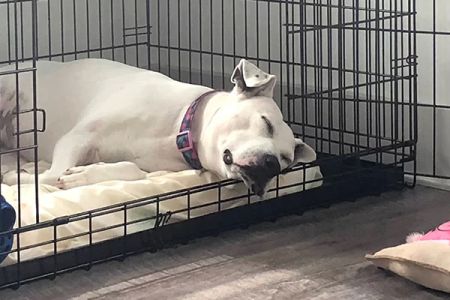Why My Dog No Longer Sleeps in the Crate
For a long time, my dog loved his crate. It was his cozy little den where he could sleep, rest, and feel safe. But recently, something changed. He suddenly refused to sleep in his crate, and it left me feeling puzzled. Was he suddenly scared of it? Had I done something wrong? After spending some time observing his behavior, I realized there were a number of possible reasons for this shift. In this article, I’m going to share my experiences and explore why dogs sometimes stop sleeping in their crates, and more importantly, how to fix it.
1. Changes in Routine
One of the first things I considered was any changes in my dog’s daily routine. Dogs are creatures of habit, and they thrive on consistency. If you’ve recently made adjustments to your schedule—whether it’s a new work routine, a change in feeding times, or different exercise habits—these can all affect your dog’s behavior. For instance, if your dog used to be let out at a specific time every morning but that schedule has changed, it could make him feel uncertain or restless. I realized that my new working hours were contributing to his unease.
2. Physical Discomfort or Illness
Another possibility I had to consider was that my dog could be experiencing physical discomfort. Dogs often refuse to enter their crates if they associate them with pain or discomfort. This could be due to a previous injury, arthritis, or other health issues that make the crate uncomfortable. After some investigation, I noticed that my dog seemed to be limping slightly, which could have been the reason he was avoiding his crate. A trip to the vet confirmed that he had developed a mild case of arthritis. Once we got him on some medication and adjusted his bedding, his behavior started to improve.
3. Crate Associations
It was also important for me to consider how my dog was associating the crate with other experiences. Was the crate a positive or negative space for him? I had used the crate primarily for sleep, but at times, it was also where he was left alone for extended periods. This separation anxiety might have been contributing to his refusal to go into the crate. Over time, he started associating the crate with loneliness and stress, and it led to him avoiding it altogether. It was a wake-up call to re-associate the crate with positive experiences, like playing with his favorite toys or giving him treats when he entered the crate willingly.
4. Lack of Proper Crate Training
If your dog has never really been properly crate trained, it could lead to hesitations about sleeping in it. I had to reconsider my approach to crate training. Initially, I had used the crate as a place of confinement when I was away from home. While this worked for a while, I realized that a better, more gradual approach might have created a more positive association with the crate. I started by making the crate a comfortable and inviting space with soft bedding and familiar items, and I encouraged him to spend short periods inside it with the door open. Slowly, he started to feel more comfortable and would willingly enter the crate on his own.
5. Fear or Anxiety
Some dogs may develop a fear of the crate, especially if it was used for punishment or if it was associated with an unpleasant experience. Dogs that are left in their crates for long periods without adequate exercise or mental stimulation might develop anxiety, which can manifest as a refusal to sleep inside. In my case, I realized that leaving my dog in the crate for too long without enough physical activity or playtime had made him anxious, which in turn made him dislike the crate. By increasing his exercise and mental stimulation, I noticed a big difference in his attitude toward the crate.
6. Reinforcing Good Behavior
Once I understood the possible reasons behind my dog’s behavior, I began to work on re-establishing the crate as a positive space. I reinforced good behavior by rewarding him with treats and praise when he entered the crate voluntarily. Slowly, I began to close the door for short periods, gradually increasing the duration he spent inside. I also made sure to avoid using the crate as a punishment. Over time, my dog started to see the crate as a safe, comfortable space again.
7. Patience and Consistency
As with any behavior issue, patience and consistency are key. It wasn’t an overnight change, and there were moments where I felt frustrated. But by sticking to the plan, giving him time to adjust, and creating a positive environment around the crate, my dog eventually returned to his old routine of sleeping peacefully in his crate. It took time, but the results were worth it.
8. Seeking Professional Help
If you’ve tried everything and your dog still refuses to sleep in the crate, it might be time to seek professional help. A dog trainer or animal behaviorist can offer personalized advice and strategies to address your dog’s specific behavior. Sometimes, the problem is more complex than we realize, and having an expert guide you through the process can be incredibly helpful.
In Conclusion
It’s important to remember that dogs, like people, can go through phases, and their behavior may change for various reasons. Whether it’s due to a change in routine, physical discomfort, anxiety, or improper training, there are always ways to help your dog feel comfortable and secure in their crate again. With the right approach, patience, and consistency, your dog can go back to loving their crate and sleeping soundly once more.









